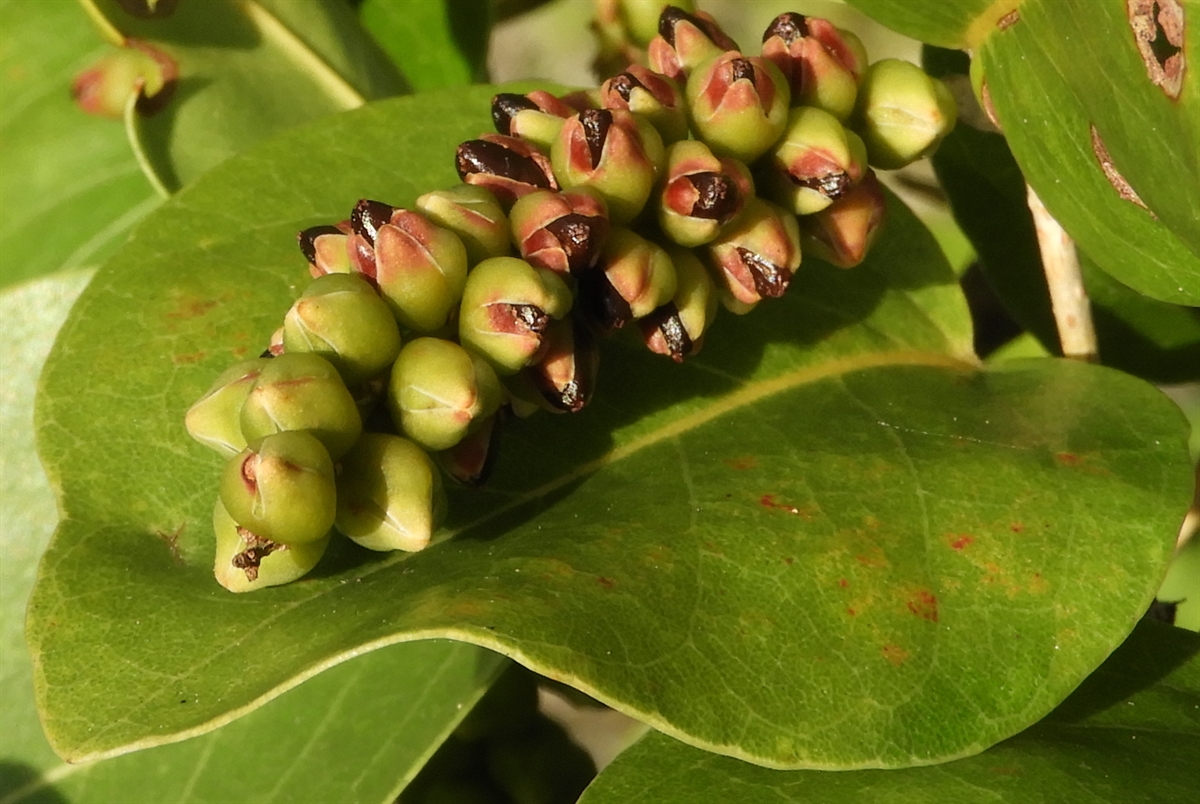Habit: Coccoloba krugii grows as a shrub to small tree to 9 meters in height. The leaves are arranged alternately, to 7 cm in length, ovate with a rounded leaf apex and entire margin, and are slightly coriaceous. There is a small deciduous sheathing ocrea extending from the petiole surrounding the stem above the internode when there are new leaves.
Coccoloba krugii is dioecious. The incomplete, imperfect, actinomorphic flowers are arranged in racemes that are as long as the leaves or shorter. The calyx has 5 green sepals. The corolla has 5 whitish petals. There are 8 stamens. In staminate flowers the stamens are fertile and are 3 times the size of the infertile ovary. In carpellate flowers the stamens are infertile and shorter than the ovary. In both types of flowers the calyx, corolla, and stamens are fused to form a shallow hypanthium. At the base of the hypanthium are nectaries. The ovary is superior with a single locule. The fruit is a triangular drupe that turns reddish black at maturity.
Habitat: Coccoloba krugii grows in Dry Broadleaf Evergreen Formation- Forest/Woodlands/Shrublands/Dwarf Shrublands (coppice, scrublands).
Distribution: Coccoloba krugii occurs throughout the Lucayan Archipelago as well as the Caribbean region.
Medicinal/Cultural/Economic usage: Coccoloba krugii is not known to be used medicinally in the Lucayan Archipelago.



